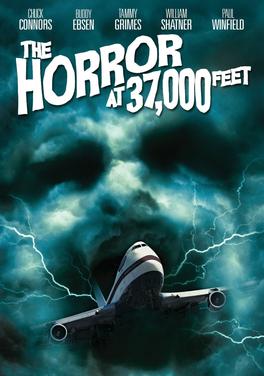Haunted by the death of his teenage daughter and the subsequent collapse of his marriage, William Dorn (Chuck Conners) feels that society is changing too quickly. He misses the days when people were polite and followed the law. Now, he’s upset that he can’t even walk around Los Angeles without seeing people littering. The waitress at the local diner has forgotten the importance of smiling while taking her customer’s order. Hospitals are full of doctors who don’t care about their patients. The colleges are full of long-haired drug pushers. His ex-wife is attending a consciousness raising seminar. William has had it with the 1970s so he decides to start blowing stuff up.
William starts to wander around Los Angeles. Usually, he’s carrying a brown paper sack and, inside the sack, he’s got a ticking time bomb. He always wears the same suit and thick glasses and yet, somehow, no one ever seems to notice or remember him. Even though all of his bombs are timebombs, they still go off within seconds of him planting them, which means that he’s usually only standing a few feet away with they explode. William also sends the police tape-recorded manifestos without making any effort to disguise his voice. William may not be the smartest criminal around but that still doesn’t stop him from terrorizing the city.
Detective Geronimo Minelli (Vince Edwards) is determined to track down the mad bomber, even if it means yelling at everyone that he meets. Minelli is one of those intense detectives who doesn’t care about what the Supreme Court has to say about the rights of suspects and the accused. Unfortunately, the only witness who can identify the bomb is George Fromley (Neville Brand), a sex offender who doesn’t want to admit that he saw the bomber blow up a hospital because he was busy assaulting one of the patients at the time. Can Minelli convince Fromley to provide a physical description of the bomber? And will William Dorn ever realize that it’s probably not a good idea to store a bunch of ticking time bombs in his basement?
First released in 1972 and also known as The Police Connection, Bert I. Gordon’s The Mad Bomber is unique amongst Gordon’s films in that it doesn’t feature any giant animals or killer bugs. In this film, the monsters are all human and don’t have any convenient excuses for their behavior. Though Neville Brand does a good job with the role, George Fromley is still probably one of the most unlikable and despicable characters to ever appear in the movie. Meanwhile. Vince Edwards plays Minelli as being the type of cop who is one bad day away from massively violating someone’s civil rights during a traffic stop. The film does build up some sympathy for William Dorn, with still shots of his daughter used to show us what’s going through Dorn’s mind as he plants his bombs. But then it tosses all that sympathy away by having him target a meeting of feminists, apparently because he blames them for his wife leaving him.
The main problem with the film is that we’re expected to believe that someone who looks like this would be able to walk around Los Angeles and plant bombs without anyone noticing.
That’s nothing against Chuck Conners, who does a good job of portraying William’s frustration with the world. But still, it’s hard to believe that no one is going to notice a dude who is nearly seven feet tall and who is carrying a ticking shopping bag.
Flaws and all, The Mad Bomber is a watchable and occasionally even an engrossing film. It’s certainly one Gordon’s better efforts and Gordon does a good job of creating and maintaining a properly ominous atmosphere, even if it sometimes hard to take seriously the sight of Chuck Conners, lumbering around in his suit and trying to discreetly drop off bombs. In many ways, it’s a film that still feels relevant today. William, like so many. is trying to forcefully stop the world from changing around him. He’s a man who has lost anything and has decided that it’s the fault of everyone else. (In many ways, he’s like Rainn Wilson in Super, ragefully reacting to a world is not as simple as he believes it should be.) The Mad Bomber may not be as much fun as Gordon’s giant monster films but it’s still a film that has something to say.







